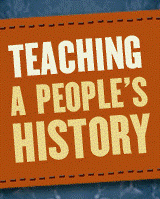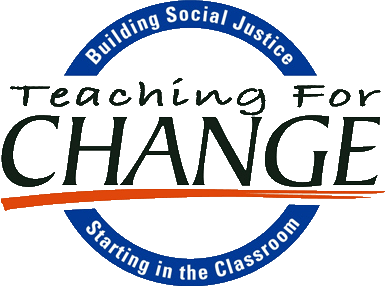|
|
|
Zinn Education Project News
|
Stealing Home: New Lessons on
Race and Displacement
 The Zinn Education Project is pleased to announce the posting of three new articles and activities on race, housing, and displacement. Originally published in Rethinking Schools magazine, these articles offer compelling examples of how teachers engage their students in exploring the roots of today's economic inequality. Two of these articles are by Linda Christensen, who describes a unit she created about ways the homes of people of color have been stolen through "race riots" and "urban renewal" in Tulsa, Oklahoma; Los Angeles' Chávez Ravine; and Portland, Oregon's Albina neighborhood. These feature role play, poetry, historical fiction, personal narrative, imaginative writing, and persuasive essay. Both articles include student handouts. In "'Why Is This the Only Place in Portland I See Black People?': Teaching Young Children About Redlining," elementary teacher Katharine Johnson shows how she works with young children in age-appropriate ways to explore the origins of racial segregation in her school's city. These articles show powerfully that in every corner of the curriculum we need to ask, "Whose lives matter?"---- and show that nothing is natural or inevitable about racial inequality. Please download these, use them, and share with colleagues.
|
New Teaching Activities on Race, Housing, and Displacment
|
By Linda Christensen
Teaching about patterns of displacement
and wealth inequality through the 1921
Tulsa Race Riot.
|
By Linda Christensen
Teaching about patterns of displacement and wealth inequality through the history of Chávez Ravine and the building of Dodger Stadium.
|
By Katharine Johnson
An elementary school teacher introduces the history of redlining through a role play designed for 1st and 2nd graders.
|
 These lessons originally appeared in Rethinking Schools magazine. To get the latest articles and teaching activities, subscribe today! These lessons originally appeared in Rethinking Schools magazine. To get the latest articles and teaching activities, subscribe today!
|
Related Articles
|

Burning Tulsa: The Legacy of
Black Dispossession
By Linda Christensen
In 1921, one of the most violent episodes of dispossession in U.S. history occurred. As Linda Christensen writes, "The term 'race riot' does not adequately describe the events of May 31-June 1, 1921 in Greenwood, a black neighborhood in Tulsa, Oklahoma. In fact, the term itself implies that both blacks and whites might be equally to blame for the lawlessness and violence." Continue reading.
|

Our House Divided: What U.S. Schools Don't Teach About U.S.-Style Apartheid
By Richard Rothstein
When Nelson Mandela died in 2013, Richard Rothstein reflected on Mandela's insistence of what underlies reconciliation is admitting violent truths. Rothstein writes, "We do a much worse job of facing up to our racial history in the United States, leading us to make less progress than necessary in remedying racial inequality." Continue reading.
|
Memorial Day Origins and Meaning
| |
| |
The First Decoration Day
By David W. Blight
Americans understand that Memorial Day
has something to do with honoring the nation's war dead. But where did it begin, who created it, and why? As a nation we are at war now, but for most Americans the scale of death and suffering in this seemingly endless wartime belongs to other people far away, or to people in other neighborhoods. Collectively, we are not even allowed to see our war dead today. That was not the case in 1865.
Continue reading.
|
Whom Will We Honor Memorial Day?
By Howard Zinn
Memorial Day will be celebrated ... by the usual betrayal of the dead, by the hypocritical patriotism of the politicians and contractors preparing for more wars, more graves to receive more flowers on future Memorial Days. The memory of the dead deserves a different dedication. To peace, to defiance of governments. Continue reading.
|
Support People's History in the Classroom
|
 
49,500 teachers use our free teaching activities...with your support we can reach 10,000 more!
|
|
|
|
|
 |
The goal of the Zinn Education Project is to introduce students to a more accurate, complex, and engaging understanding of United States history.
| |
|
|
|
| |
|
|
© 2015 The Zinn Education Project, a collaboration of
|  |
and
|  |
.
|
|
|
|
|